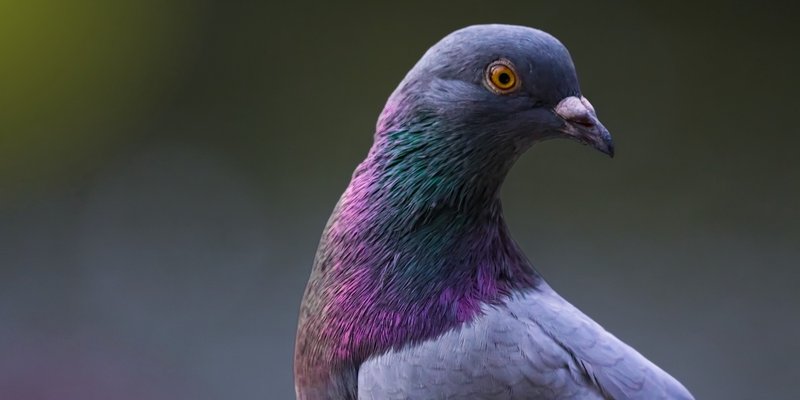
Pigeons have quite a history. They’ve been domesticated and bred for various purposes, from racing to companionship. But with urbanization and habitat destruction, many pigeon species are facing threats. In this article, we’ll dive into the conservation efforts aimed at protecting these fascinating birds. We’ll explore why it matters, what challenges they face, and how people are stepping in to help.
Understanding Pigeon Species and Their Conservation Status
To grasp the importance of pigeon conservation, it’s essential first to understand the different species that inhabit our world. Most people think of the common rock pigeon, which is found in cities worldwide. However, there are many unique species, such as the Mauritius pink pigeon and the Nicobar pigeon, both of which are under threat. The Mauritius pink pigeon went from nearly extinct to slightly recovering, thanks to dedicated efforts.
Most pigeon species face challenges due to habitat loss, hunting, and introduced predators. When urban areas expand, natural habitats shrink, leaving fewer places for these birds to nest and feed. Additionally, hunting for sport or to control populations adds to their decline. Conservationists are tirelessly working to protect not just the birds but their habitats too, creating a balanced ecosystem for everyone.
The Role of Pigeon Conservation Organizations
Many organizations are committed to pigeon conservation. Groups like the BirdLife International and local wildlife charities work to raise awareness and funds for protection efforts. Their strategies often include habitat restoration, public education, and advocating for laws to protect these birds.
For example, BirdLife International has focused on the Spotted Green Pigeon in the western Pacific, where conservation efforts are bringing together local communities and international researchers. By involving locals, they foster a sense of ownership and responsibility over local wildlife. Honestly, when people feel connected to their environment, the results can be incredible.
Habitat Restoration: A Key Strategy
One of the biggest challenges for pigeons is the loss of their natural homes. Restoration involves reviving these areas to make them suitable for birds to thrive. This can mean replanting native trees or creating safe nesting sites away from predators.
In urban settings, this strategy can also involve creating rooftop gardens or green spaces in parks. Pigeons need places to nest and find food, just like we need cozy homes and favorite cafes. By transforming concrete jungles into green havens, we can help make cities more bird-friendly. That’s a win-win, right?
Community Engagement in Pigeon Conservation
Engaging the community is a critical part of conserving pigeon populations. People can get involved through local initiatives, like making birdhouses or participating in birdwatching events. These activities not only help educate the public but also foster a sense of connection to local wildlife.
Schools are also getting in on the action, teaching students about pigeons and the importance of biodiversity. When kids learn about these birds, they can become advocates for conservation. Imagine a future where today’s children grow up to protect their local environment—it’s all about planting those seeds of awareness early!
Research and Monitoring: Keeping Tabs on Pigeon Populations
Research plays a huge role in conservation. By studying pigeon populations, scientists can understand their behavior, breeding patterns, and where they thrive best. Monitoring their numbers helps identify trends, including population declines or recoveries.
Tools like satellite tracking and banding help researchers gather critical data. For instance, understanding migration patterns can indicate whether certain habitats are being disrupted. This kind of information is crucial for making informed decisions about protections and interventions.
The Importance of Education and Awareness Campaigns
Awareness campaigns are vital for broadening understanding about pigeons and their plight. Many people don’t realize that pigeons can be endangered. Campaigns can highlight their beauty and importance in ecosystems, encouraging people to appreciate and protect them.
Social media has become a powerful tool in this arena. Organizations use platforms to share stunning photos, informative videos, and personal stories about pigeon conservation. Relating to these birds on a personal level can inspire action—whether it’s volunteering, making donations, or simply sharing information with friends.
What You Can Do to Help Pigeon Conservation
You might be wondering how you can make a difference. There are plenty of ways to help out! Here are some suggestions:
- Support local wildlife organizations: Consider donating to or volunteering with groups dedicated to avian conservation.
- Create a bird-friendly backyard: Plant native plants, put up bird feeders, and make safe nesting areas.
- Educate others: Share your knowledge about pigeon conservation with friends and family.
- Report sightings: If you see a unique pigeon species, let local wildlife organizations know. Your observations can aid their research!
Every little bit helps, and the more people are aware and involved, the stronger these conservation efforts will become.
Conservation efforts aimed at protecting the pigeon are not just about saving a bird; they’re about preserving the beauty and biodiversity of our world. The challenges are significant, but with dedicated organizations, community involvement, and ongoing research, there’s hope.
Whether you’re a casual birdwatcher or a passionate conservationist, every action counts. By supporting pigeon conservation, we’re not just helping these birds; we’re nurturing the delicate balance that sustains our ecosystems. So next time you see a pigeon, remember their story and consider how you can contribute to their future. Together, we can ensure these fascinating birds continue to grace our skies for generations to come.
